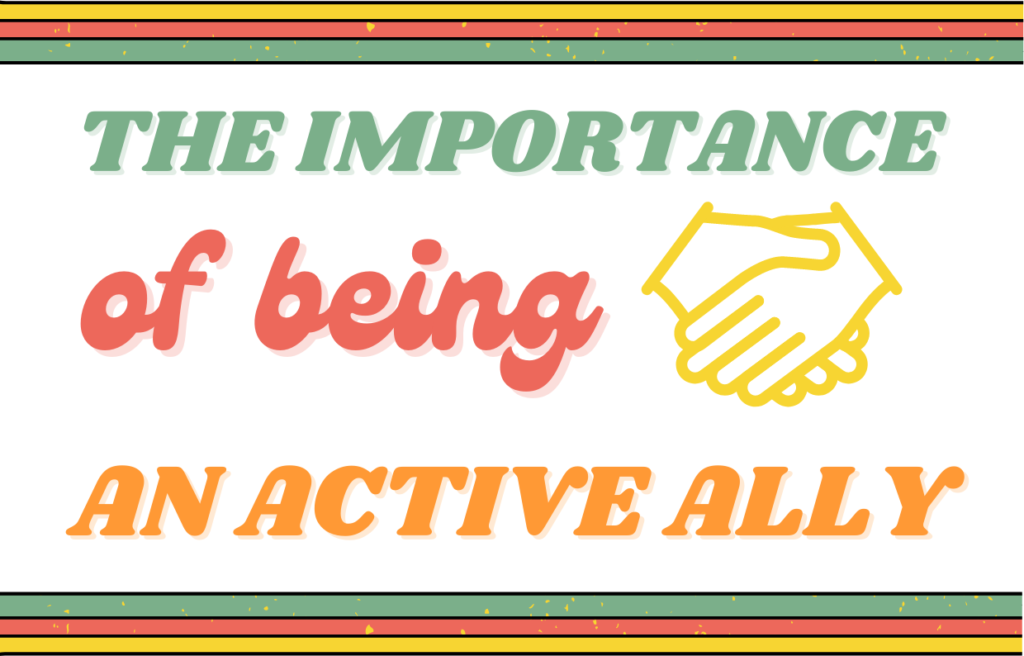
By Melinda Graczyk
Have you ever been in your workplace kitchenette or copy room and heard phrases or seen actions such as:
- “She’s pretty smart for a black girl.”
- “What did you think of that (insert activity here) at the team building? It was so gay.”
- “I received the quote for the (product) yesterday. I’m going to go back and Jew them down.”
- Telling lewd jokes or sharing stories about sexual experiences (even if it’s simply done in your presence).
I know I have, and so have your Black, LGBTQIA+, Jewish, and female colleagues, and most likely, they did not feel comfortable enough to speak up and correct the person making the comments. Sometimes the disrespect isn’t as blatant as a comment and appears simply as an individual speaking over or rolling their eyes at another.
Research has shown that being a better ally is one way all employees can stand against bigotry in all its forms at work. Allies are people from a group who do not generally suffer discrimination, but support those experiencing intolerance. The potential benefits of ally-ship in the workplace can take many forms. It can foster positive inter-group connections, undermine racism and other forms of oppression, and build a more positive workplace culture; but navigating complex situations at work and even simply being a good human is rarely easy.
Not all disrespect is based on bias or hate. Things like stress, communication style, and rivalries can all create ill-mannered workplace dynamics as well, but prejudice can be one of the more problematic drivers. Prejudice can be a catalyst of ridicule in ways that we may not be able to see, and this form of disrespect may also be a product of ignorance. There is always the possibility that people might not understand or simply do not know that their actions have a negative impact. Implicit bias shows up as unconscious actions, making it challenging to identify and even trickier to uproot. Here are just two examples of implicit bias:
- A white person at a conference lunch is more likely to sit at a table of white people rather than a table including people of color.
- A man is more likely to interrupt his female co-workers than his male co-workers.
Implicit biases are something that almost all of us have exhibited at some point. This behavior is not because we are bad people, but because we are part of a culture that, despite significant advancement, is still racist, sexist, homophobic, etc. Although it may not be comfortable to find out that we have been making missteps of our own, we can take action to change and correct our behavior.
There are several options for being a reactive ally when you witness bad behavior or harassment. None of the approaches are perfect or easy, and you may need to consider more than one option and select the one(s) that is right for each situation.
Several ways to consider intervening:
- The Direct Approach: After assessing the safety of both the target and yourself, be firm and clear to the instigator and have a conversation with them. Point out what they did and how it may have made the victim feel and provide options to change their behavior. This approach gives this person the opportunity to learn from their mistake and see their victim in their full humanity. No one is perfect, and the person making such remarks may not be aware of the hurt they are imposing on those around them.
- Indirectly De-Escalate: Start a conversation with the victim or find another way to draw attention away from the situation (i.e., spill your coffee, ask about an upcoming meeting, etc.)
- Delegate: Notify a person of authority about what is going on. In taking this approach, you delegate the situation to an authorized person in the company. However, HR departments are designed to protect the company, which, at times, may not always serve the victim’s best interests. If they run an investigation, HR may not be able to keep the situation entirely confidential. Additionally, witnesses may not feel comfortable disclosing full details, or “evidence” may not exist. The accused may also try to discredit the victim’s character to create confusion and build a defense.
- Check-In with the Target: After the incident is over, ask the victim if they need further assistance from management, the police, or simply company until they recover from the episode.
- Document: We are all familiar with this approach. Since your phone is likely to be nearby, record the incident, but it is important to NEVER post to social media. You do not want to insult or victimize the person being harassed further.
We all have room to improve in our interpersonal relationships. We need to live in a state of curiosity, not fear, and be willing to learn and work toward becoming excellent at caring for each other.
In search of related trainings or coaching? Contact us today for more information!
